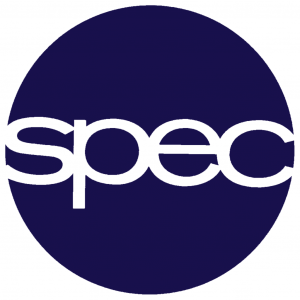Arrays of nanoparticles are expected to show interesting properties, e.g. with respect to their electronic, magnetic or optoelectronic behaviour [1,2]. Here we present results on how bidimensional arrays of Au55-clusters on a surface can be realized [3]. Using a complementary pair of simple alkylthiolates with hydrogen bonding moieties, functionalized Au55 clusters could be selectively deposited onto self-assembled monolayers (SAMs) on gold that carry the opposite functionality. The deposition can be readily controlled by the medium in which the clusters are dissolved and by the density of the functionalities in the SAM, and yields single clusters as well as two-dimensional cluster assemblies on the surface. The clusters are sufficiently strongly bound to give structures that are stable at ambient temperature, and that allow scanning tunneling microscopy (STM) and scanning tunneling spectroscopy (STS) on single clusters on the surface. Only when the two complementary ligands are present, one on the clusters and the other in the SAM, STM images show specific adsorption of the functionalized Au55-clusters and no aggregation between Au55 clusters. In the case of the presence of the same ligand on the Au55 clusters and in the SAM or when ligands are present only on the clusters, no specific adsorption is observed. [1] E.A. Speets, B.J. Ravoo, F.J.G. Roesthuis, F. Vroegindeweij, D.H.A. Blank, and D.N. Reinhoudt, Nano Letters 4, 841 (2004). [2] C. Burda, X.B. Chen, R. Narayanan, and M.A El-Sayed, Chemical Reviews 105, 1025 (2005). [3] C. van den Brom, I. Arfaoui, T. Cren, B. Hessen,T.T.M. Palstra, J. De Hosson and P. Rudolf, Advanced Functional Materials (2006) in press.
Materials Science Centre, University of Groningen, The Netherlands




